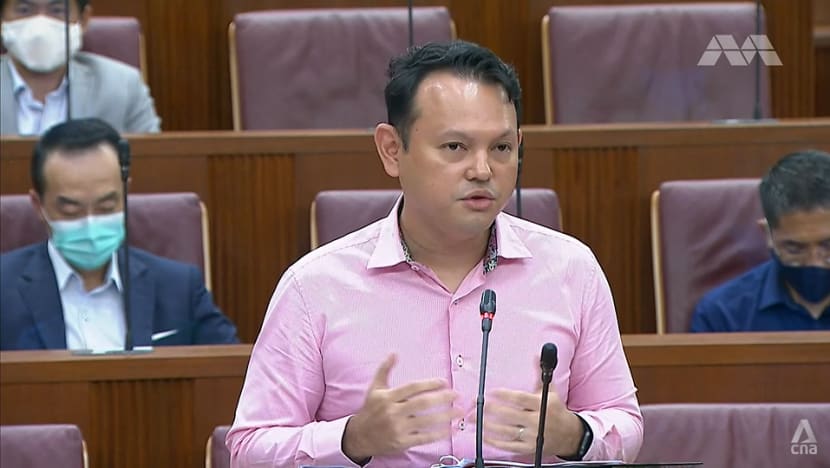COVID-19 pandemic shows progressive wage model 'superior' to minimum wage: Zaqy Mohamad

Senior Minister of State for Manpower Zaqy Mohamad in Parliament on Jul 6, 2021.
SINGAPORE: The COVID-19 pandemic has shown that the progressive wage model is “superior to a blunt minimum wage”, said Senior Minister of State for Manpower Zaqy Mohamad in Parliament on Tuesday (Jul 6).
This is because the progressive wage model, which negotiates wage growth with tripartite partners, creates a sector-specific consensus on a suitable pace of growth, he said.
Specifically, the “sectoral approach” has enabled the recent roll-out of the progressive wage model for the cleaning sector, as well as other sectors that are able to adjust to the model in the short-term, said Mr Zaqy.
READ: Cleaners’ wages to rise from 2023 amid COVID-19 labour crunch
“A blunt minimum wage may not have been able to achieve consensus or (be) as ambitious a wage growth,” he said.
“Sectors such as tourism, aviation, hospitality and others that are severely impacted would not have been able to agree to such a move. Our targeted approach enables the tripartite movement to advance PWM at a pace depending on how the different sectors perform in the market.”
He also noted that the model allows stakeholders to plan ahead for progressive wage model pay increases in their multi-year contracts with service buyers.
A mid-point review by tripartite committees would also ensure that any increases remain sustainable, he said.
A key concern in raising wages is also whether it would contribute to greater unemployment. But the consensus created among stakeholders in the progressive wage model provides greater confidence that any wage increases “can be supported by the market and by society”, and will not put employment at risk, Mr Zaqy said.
READ: Negotiations on wage increases for workers in security, landscape and lift and escalator sectors to be concluded soon: Tan See Leng
Everyone in society has a role to play in helping to uplift lower-wage workers, Mr Zaqy emphasised.
For instance, employers have to drive productivity with better technology or explore new business models, he said. Service buyers will have to “embrace outcome-based contracting and contract durations that encourage investment in new technology”.
Consumers will also have to contribute by paying slightly more for services and products as sectors implement the wage model, said Mr Zaqy.
EXPANDING THE MODEL TO OTHER SECTORS
Apart from helping lower-wage workers cope in the pandemic, it is also important to help strengthen their prospects for the long-term, which is why a tripartite workgroup focusing on this group was formed last year.
It will be releasing its recommendations "in the coming months", said Mr Zaqy.
He reiterated that the Government hopes to cover all sectors with the progressive wage model eventually, with the next three sectors on the agenda being food services, retail and waste management.
Tripartite clusters handling these plans will take into account market conditions and what each sector can manage as they recover from the economic fallout of the pandemic, he noted.
He also said these sectors are “making good headway” in developing their models and are committed to submitting their recommendations on these before the end of the year.












